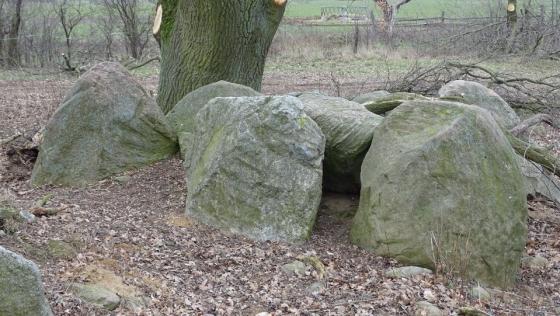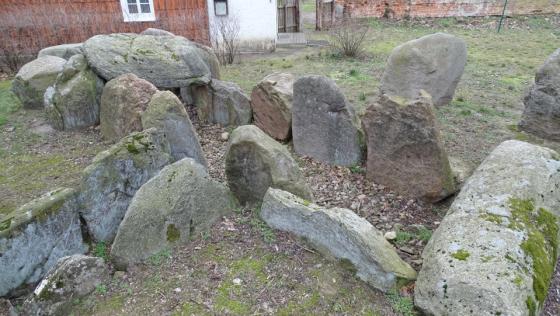Stöckheim is a grand dolmen consisting of seven pairs of supporting stones and an enclosure. The current state of preservation is good, capstones partially collapsed, most enclosure stones are missing, two supporting stones are fallen over, two supporting stones are missing. Most of the enclosure stones were already missing in 1843 at the time of Danneil, according to his statements they were unusually small. The trapezoidal chamber is north-south orientated and 9.2 m long and 1.8 – 2.2 m wide.
The northern capstone, which is the largest surviving capstone of all megalithic tombs in the Altmark, is still in situ. It is 4.5 m long, 2.9 m wide, 0.8 m thick and weighs about 22 tons. At its southwest corner, it has a deep groove (referred sometimes as blood groove). In its surface over 80 cup marks were incorporated.
The tomb is located about 100 meters behind the village exit of Stöckheim in the direction of Lüdelsen, left of the road and easily accessible via a field path.
Visited March 2019













































